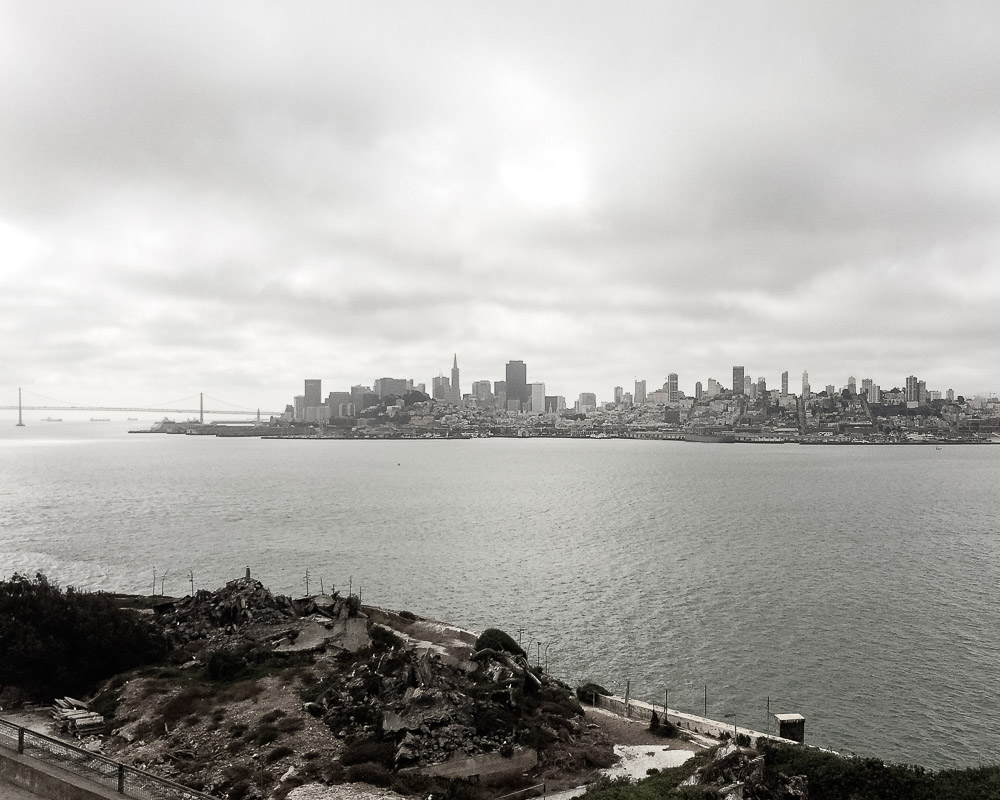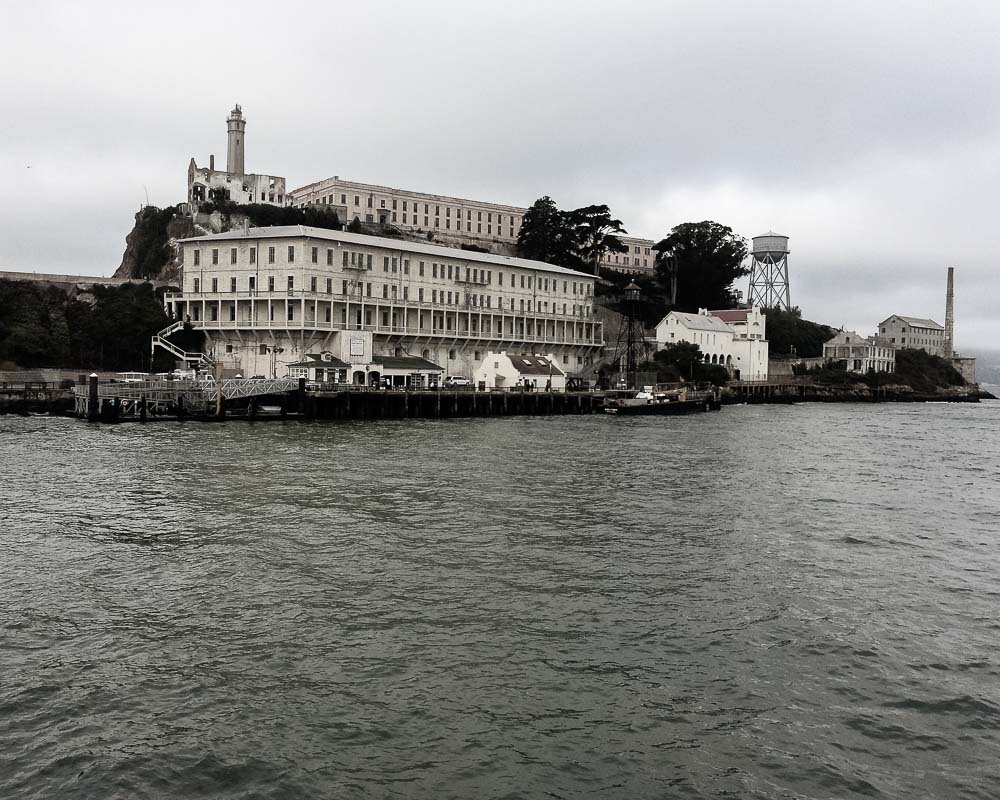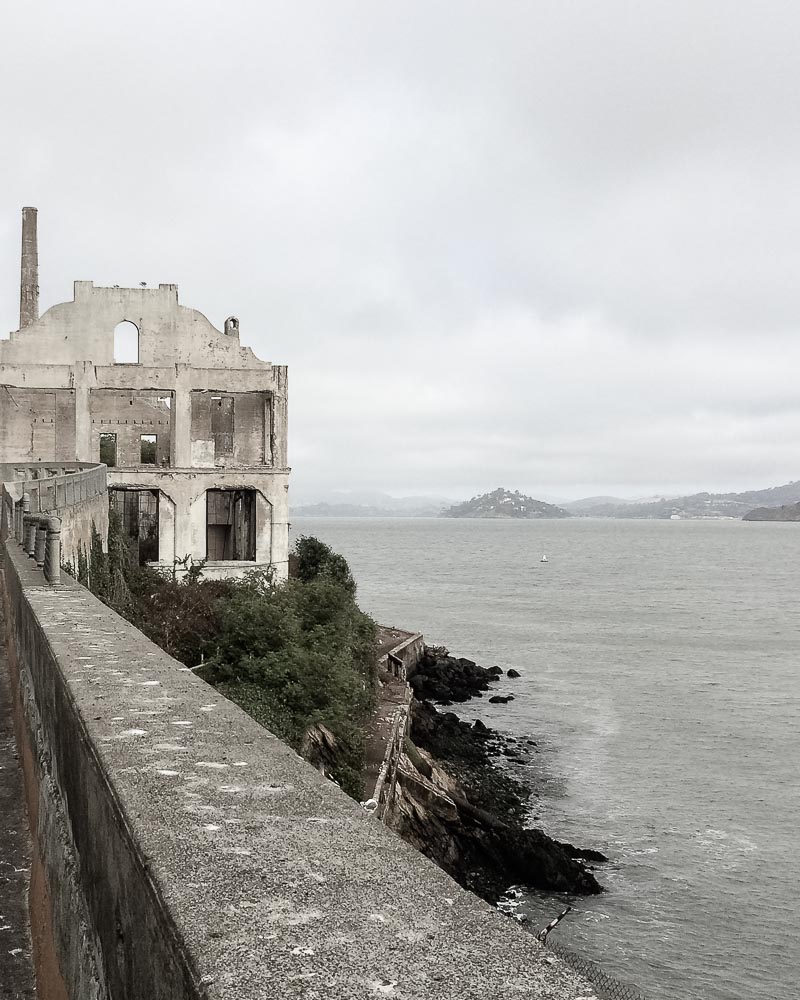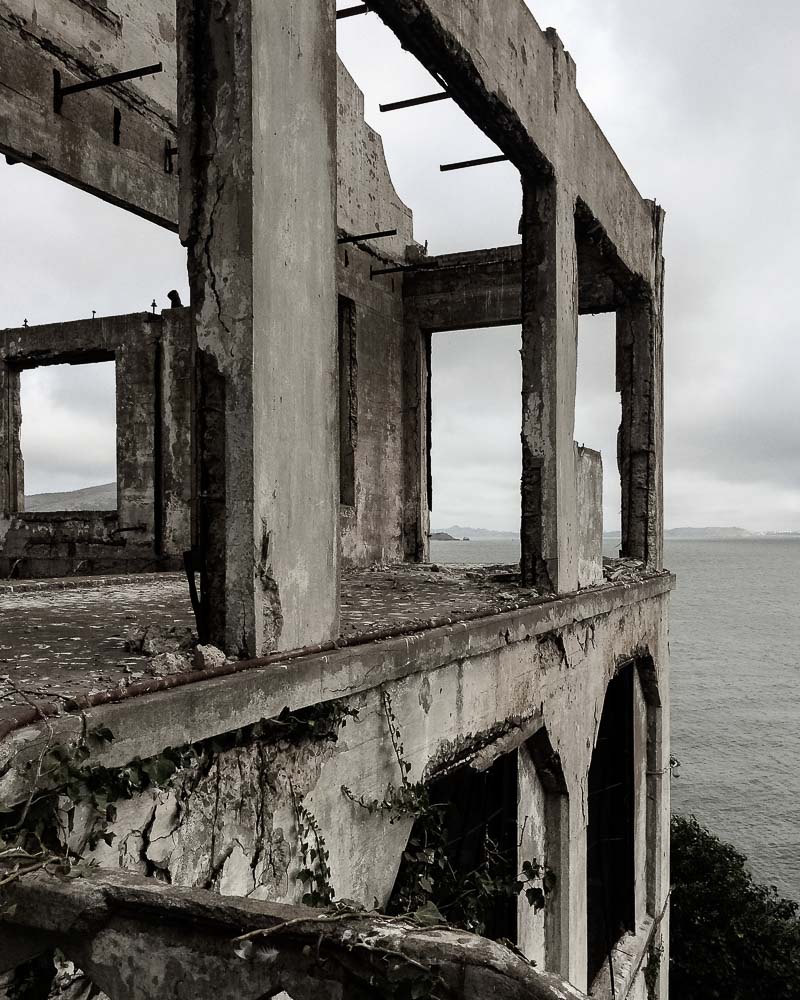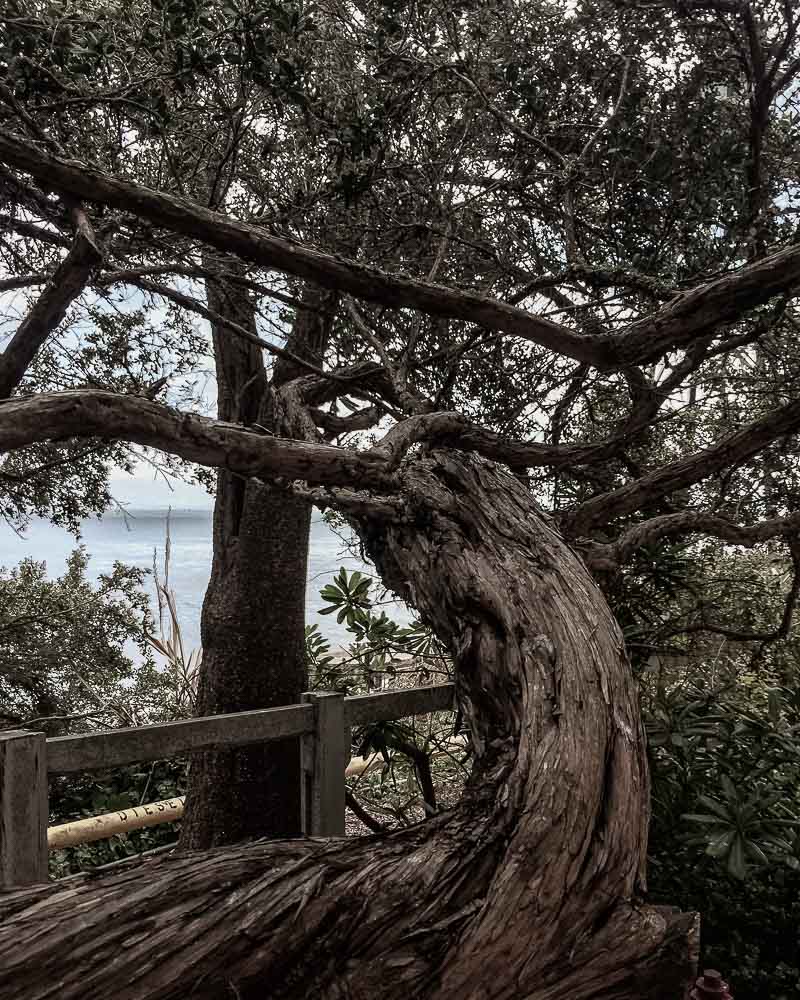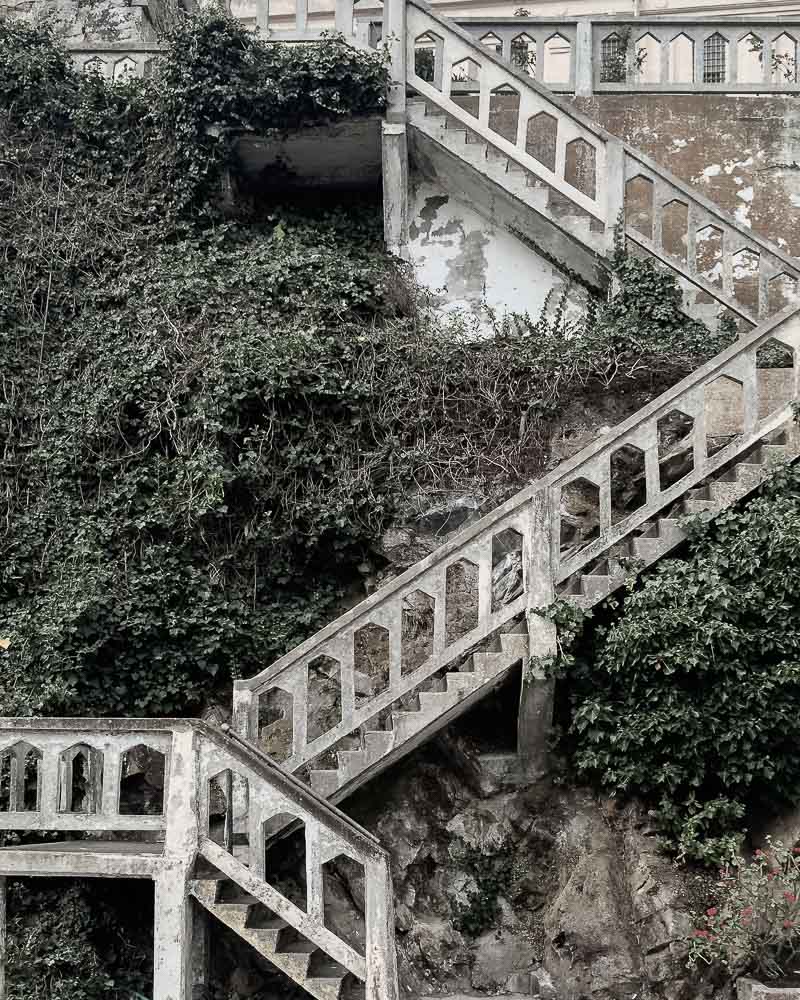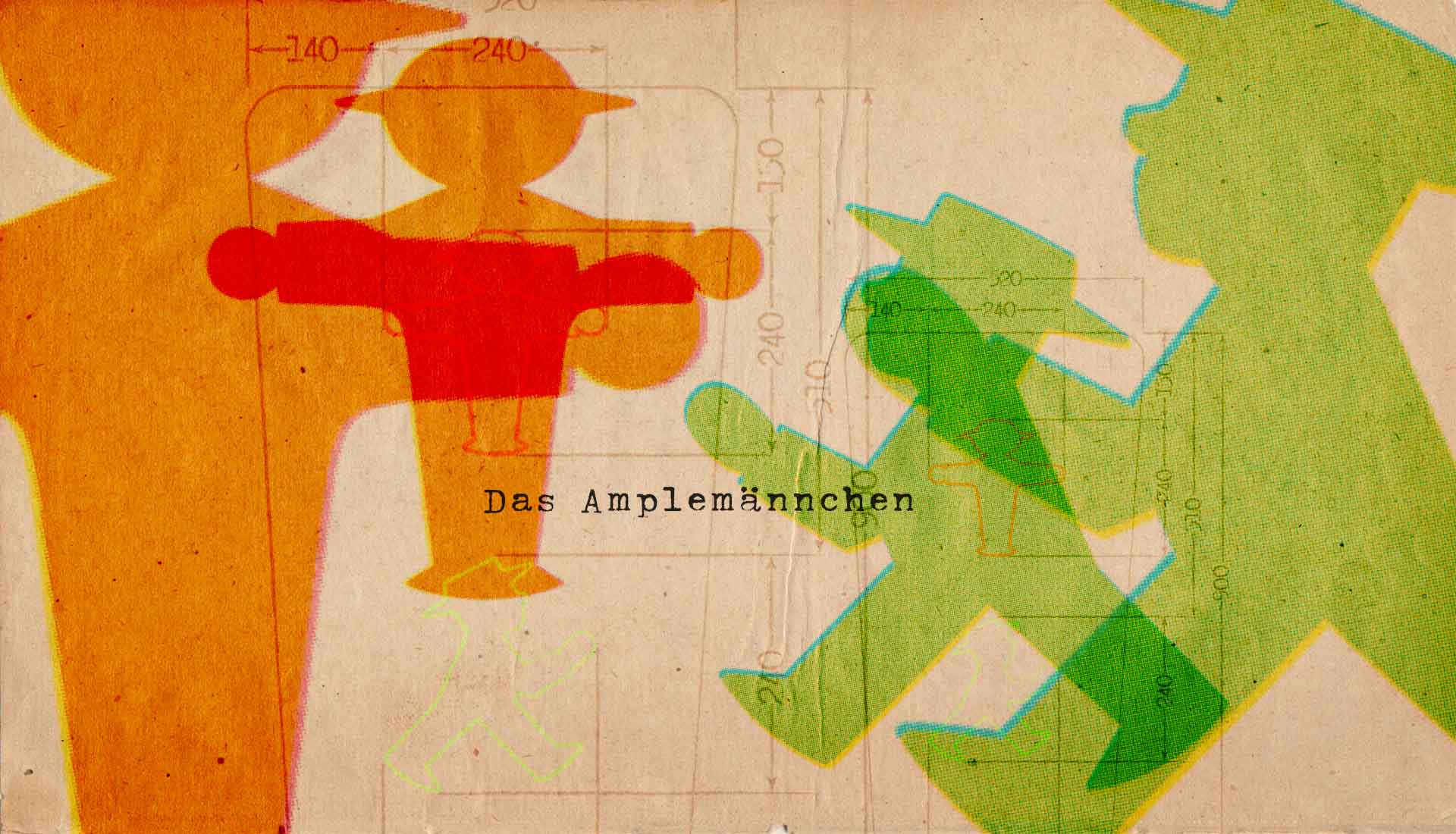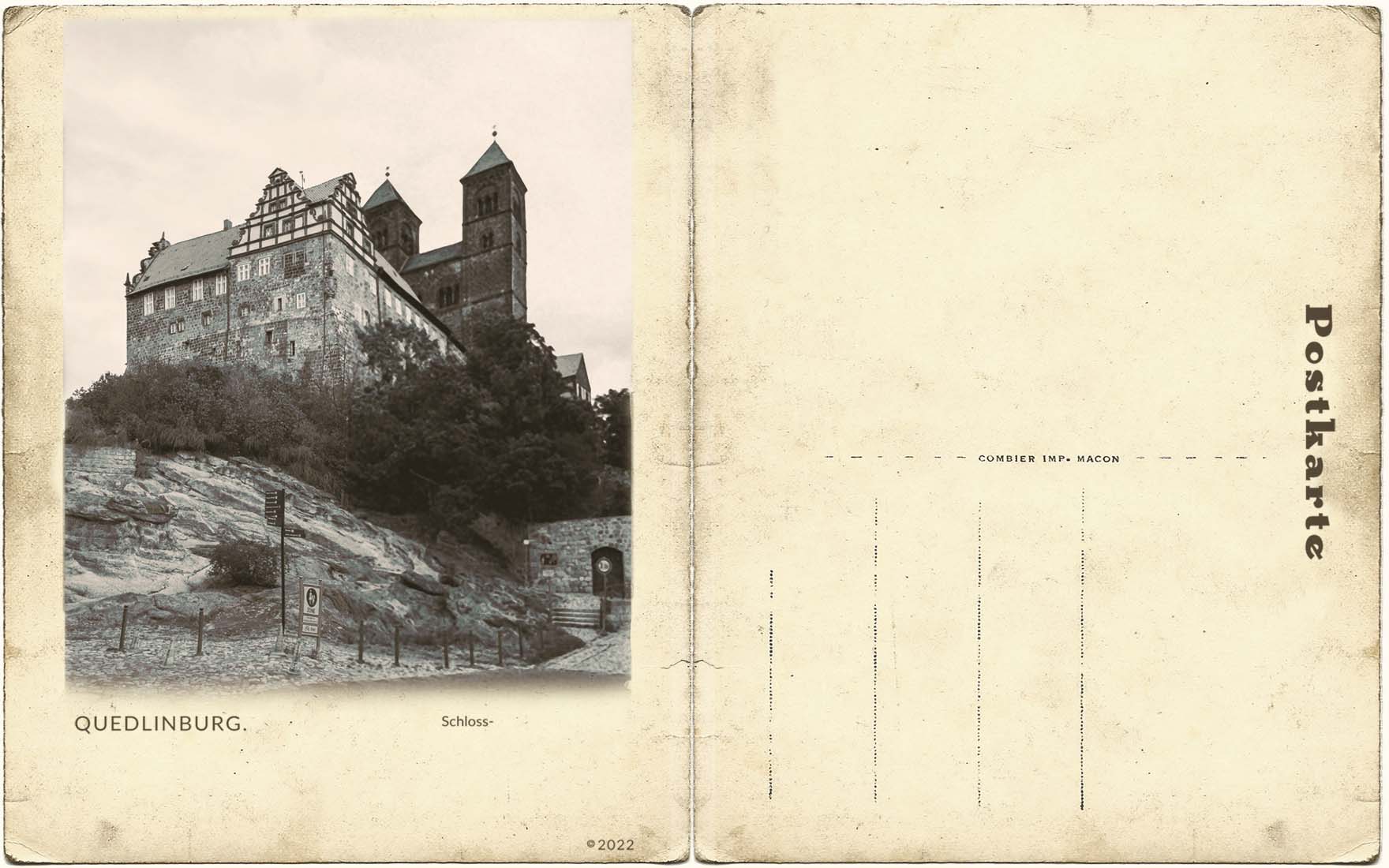lcatraz Island has no real beaches and measures only 22 acres (9 hectares) and is located 1.5 miles (2 km) offshore.
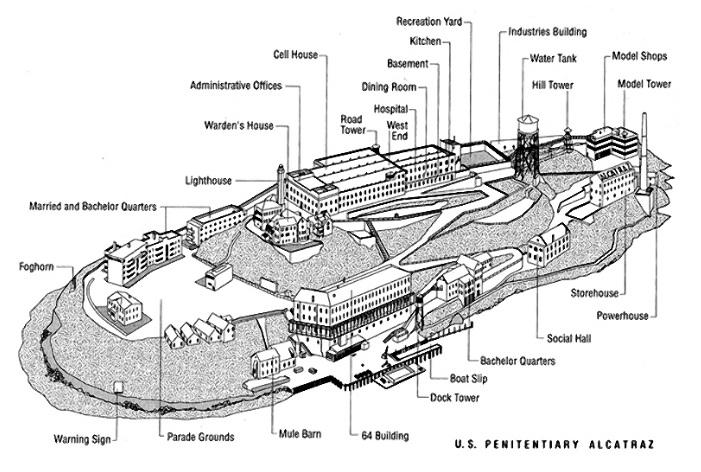
The large brick Building 64 greeted all inmates when first coming to the island. One of the oldest buildings on the island, this former army and military guard barracks was housing for guards and their families. During Federal prison times (from 1934), the building gradually descended into shabbiness. Although new barracks were built, most families arriving on the island stayed in Building 64 until a room in the new quarters was available. Most of the other residential quarters have since been demolished, but Building 64 remains
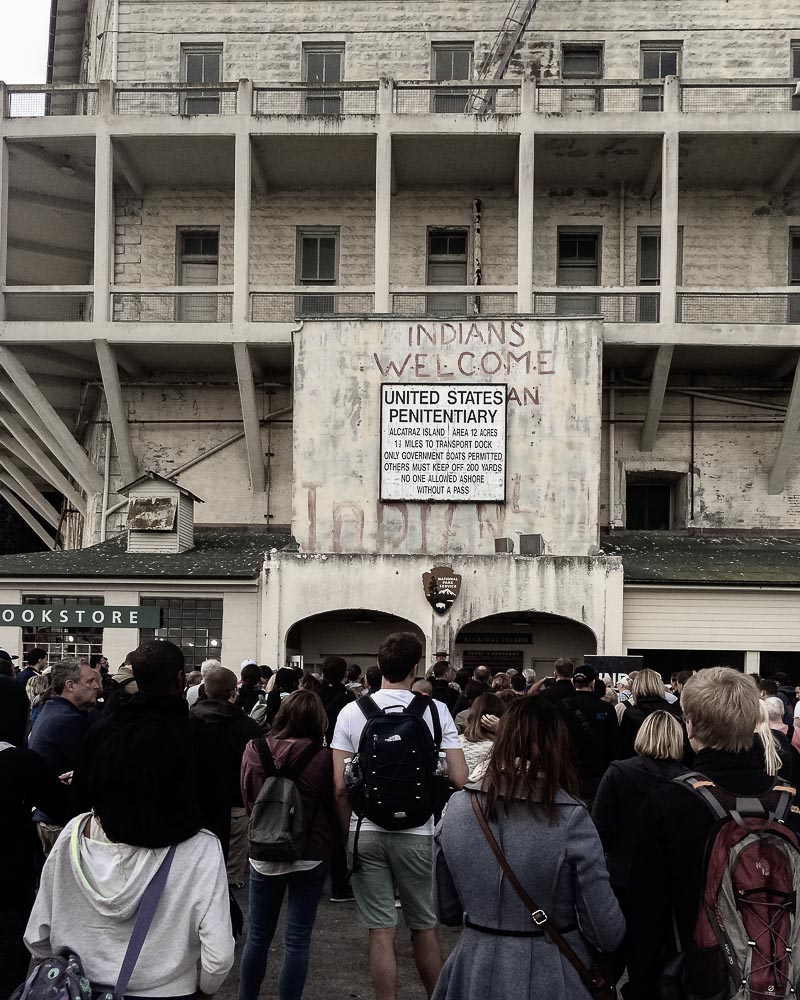
The Social Hall, also known as the Officer’s Club, formerly housed the post exchange. The club was a social venue for the Federal Penitentiary workers and their families on the island to unwind after a hard week’s work dealing with America’s most hardened criminals after they’d been locked up at 5:30.
The Social Hall had a small bar, library, large dining and dance floor, billiards table, ping pong table, and two-lane bowling alley – it was the center of social life on the island for the employees of the penitentiary.
Indeed, the Social Hall regularly hosted dinners, bingo events, and from the 1940s onwards, showed movies every Sunday night. The employees formed bowling leagues and held championships. Food was supplied from leftovers in the kitchen and often brought by the attendees so it was usually free for the guests of the parties.
It was responsible for organizing numerous special events on the island (held either in the hall or the Parade Grounds) and the fundraising associated with it, anything from ice cream and watermelon feasts to Halloween costume and Christmas parties.
Now, only a crumbling skeleton remains to hint at the former building reportedly destroyed by fire during the Indian Occupation in 1970.
Alcatraz Island Lighthouse was the first lighthouse built on the West Coast in 1854. However, the original lighthouse was damaged in the 1906 earthquake and was replaced by the concrete tower that now resides on the island.
The Warden’s House was the home of the penitentiary’s warden and sat next to the lighthouse. The 3-floor 15-room mansion was built in 1921 (or 1926 or 1929 – there seems to be a debate) and had 17-18 rooms. When Alcatraz was converted into a penitentiary, it became the residence of the warden.
Between 1934 and 1963 the four wardens of Alcatraz resided here – a house of luxury in stark contrast to the jail next to it. The wardens often held lavish cocktail parties and the house had a terraced garden, greenhouse, and tall windows that provided great views of San Francisco Bay. The house is now but a ruin, burned down during the Occupation of Alcatraz in 1970.
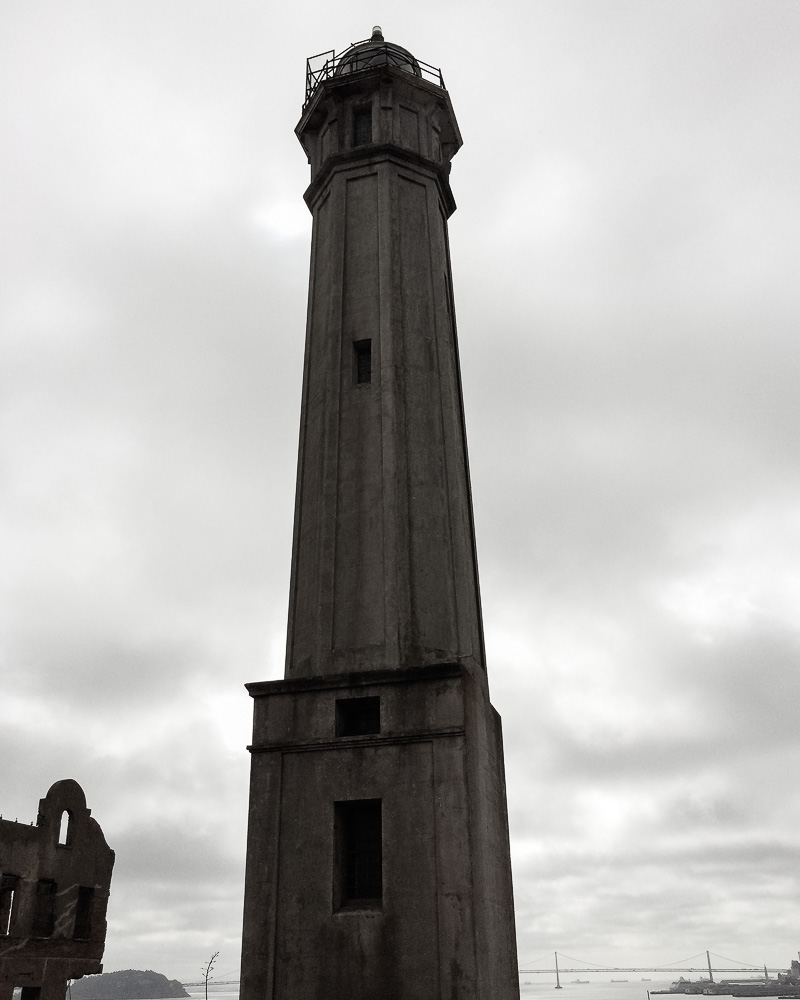
Alcatraz had no water supply of its own…all that was needed had to be imported by tugboat and barge and stored in the water tower. During the island’s military years, water would have been stored in tanks and cisterns on the roof of the citadel. The water tower was built in 1940–41 by the Federal Bureau of Prisons and is now the tallest structure on the island and can hold 250,000 gallons (950,000 liters) of water.
The tower has been empty since 1963 and has deteriorated, rusted by the salt air and wind. In 2011, the tower was restored including a seismic upgrade and a switch out of lead paint for marine paint. Even the famous graffiti from the Occupation of Alcatraz was repainted.
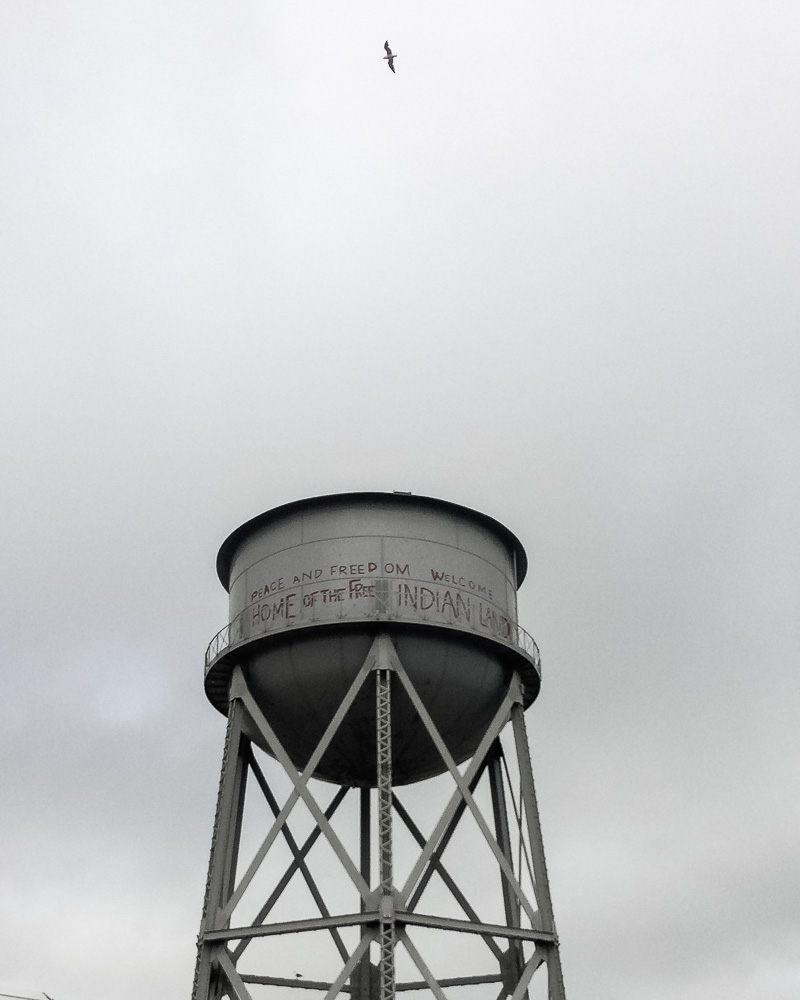
Just a short distance away, San Francisco can be easily seen from the front entrance of the cellhouse.
